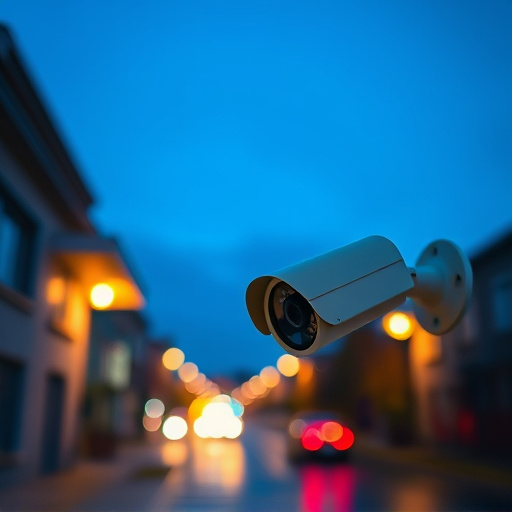Optimizing fake security camera placement angles is vital for effective crime deterrence. Positioning replicas at human eye level (5-6 feet) aligns with natural sight lines, making them harder to identify as fakes. This strategy, combined with considering access points and blind spots, ensures comprehensive coverage while maintaining an authentic environment. By seamlessly integrating into surroundings, these cameras deter crime by projecting a robust security presence, with attention to detail in design and functional simulation enhancing their realism. Integrating fake security cameras requires balancing security enhancement with privacy respect, adhering to local laws and employing regular reviews and public education for ongoing effectiveness and trust.
In today’s digital age, realistic-looking fake surveillance equipment is a game-changer for both security professionals and everyday folks. This article delves into the art of simulating security cameras, focusing on understanding fake security camera placement angles as a key element in creating convincing visuals. We explore crucial factors that contribute to their realism and ethical considerations, offering best practices for responsible implementation.
- Understanding Fake Security Camera Placement Angles
- Key Factors in Creating Realistic-Looking Equipment
- Ethical Considerations and Best Practices
Understanding Fake Security Camera Placement Angles
When installing realistic-looking fake surveillance equipment, understanding the optimal fake security camera placement angles is key to enhancing security and deterring potential threats. Unlike real cameras, strategically placed replicas should mimic natural lines of sight to appear authentic. Typically, this involves positioning them at heights that align with human eye levels, often around 5 to 6 feet (1.5 to 1.8 meters) above the ground. This angle allows for comprehensive coverage while blending seamlessly into the environment, making it harder for would-be criminals to identify and avoid surveillance.
The placement should also consider common points of access and potential blind spots. For example, near entrances, windows, or areas with limited visibility should have fake cameras positioned to fill these gaps. This strategic approach ensures that while the cameras are realistic in appearance, they effectively deter crime by conveying a strong security presence across the premises.
Key Factors in Creating Realistic-Looking Equipment
Creating realistic-looking fake surveillance equipment involves several key factors. One of the most critical aspects is fake security camera placement angles. Cameras must be positioned in such a way that they mimic genuine installation, considering factors like height, perspective, and field of view. This includes simulating the natural angles and orientations found in real security setups, ensuring the fake cameras look convincingly integrated into their surroundings.
Additionally, attention to detail is paramount. This encompasses both physical design and functional simulation. The equipment should accurately replicate the appearance of genuine models, down to subtle nuances like branding, casing materials, and connector types. Moreover, incorporating realistic movement and lighting effects can significantly enhance believability. By combining precise placement with meticulous attention to detail, manufacturers can produce fake surveillance equipment that tricks even the most discerning eye.
Ethical Considerations and Best Practices
When integrating realistic fake surveillance equipment, ethical considerations are paramount. While the primary goal is to deter potential criminals or provide a sense of security, it’s crucial to respect privacy rights and avoid creating an atmosphere of mistrust in public spaces. Placement angles of these fake security cameras should be strategic yet responsible, mimicking genuine camera locations without invading personal spaces or recording sensitive areas.
Best practices involve adhering to local laws regarding surveillance equipment, ensuring transparency where possible, and prioritizing the safety and comfort of individuals. Regularly reviewing and updating the placement of fake cameras can help maintain their effectiveness while minimizing potential harm. Additionally, educating the public about the presence of these devices can foster a sense of security without undermining trust in law enforcement and security professionals.
Realistic-looking fake surveillance equipment can be a valuable tool for enhancing security while maintaining an aesthetic appeal. By understanding the optimal fake security camera placement angles and considering key factors like material quality and detail, it’s possible to create convincing fakes. Additionally, adhering to ethical considerations and best practices ensures responsible use, preventing unwarranted intrusion or deception. When implemented thoughtfully, realistic fake cameras can significantly contribute to comprehensive security strategies in various environments.
